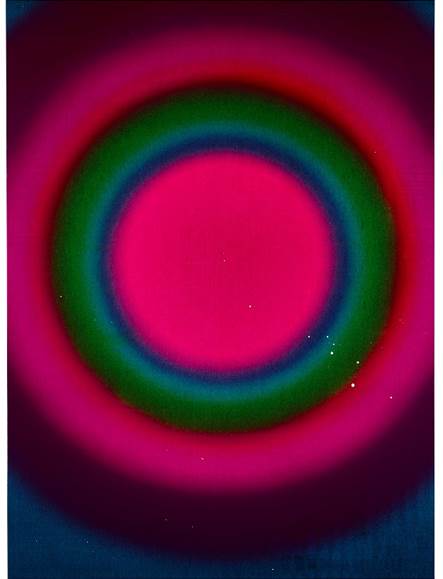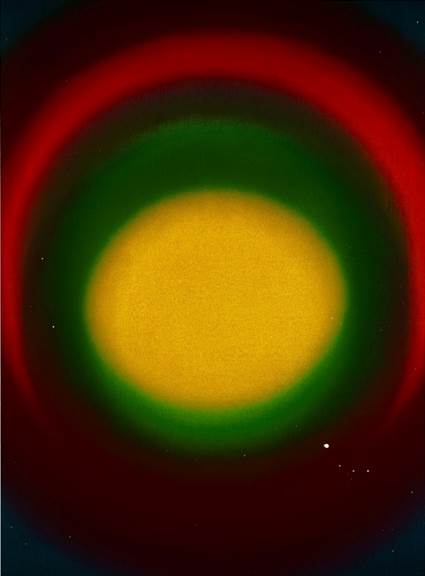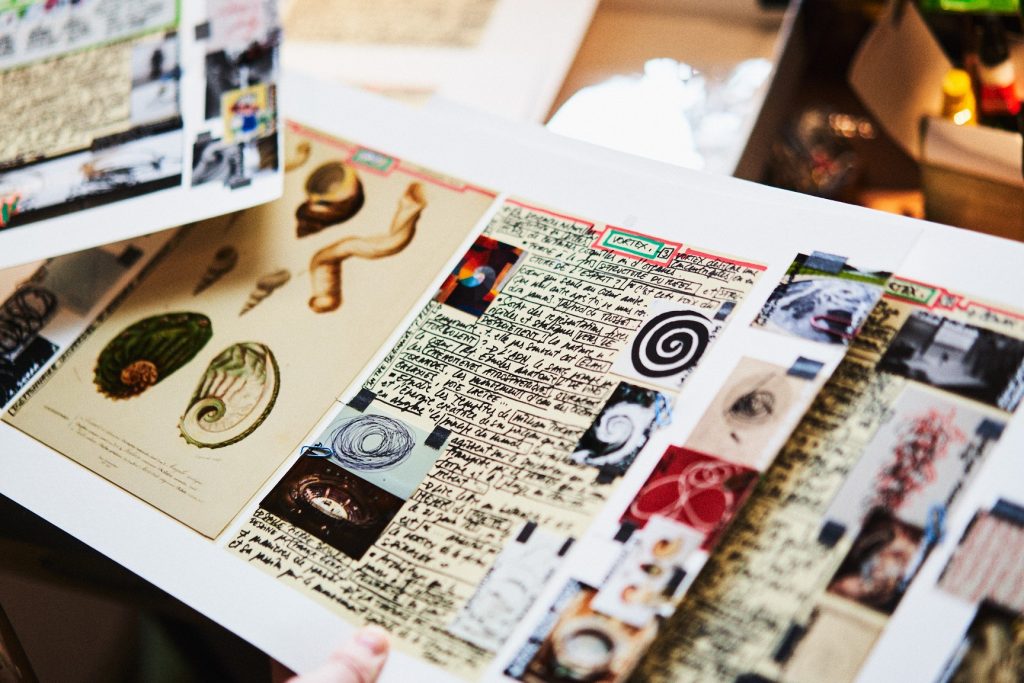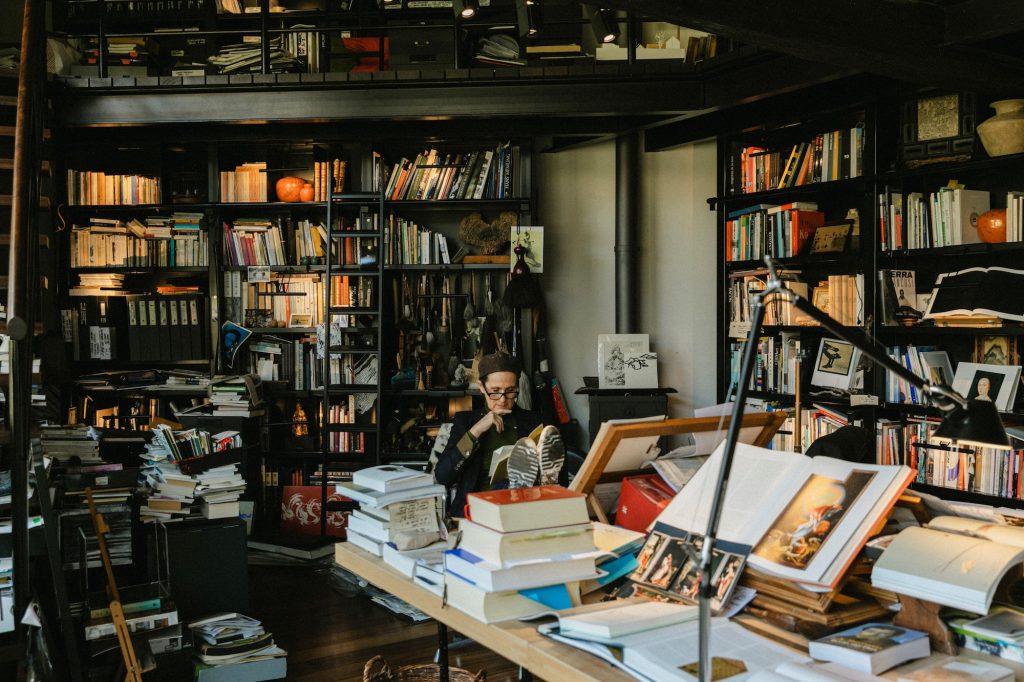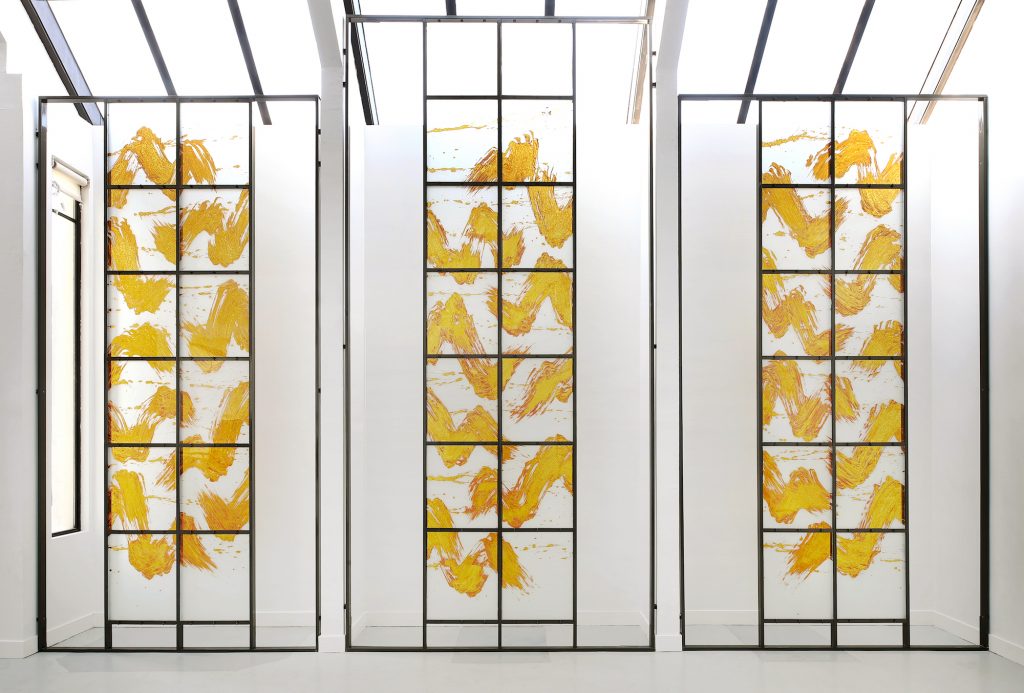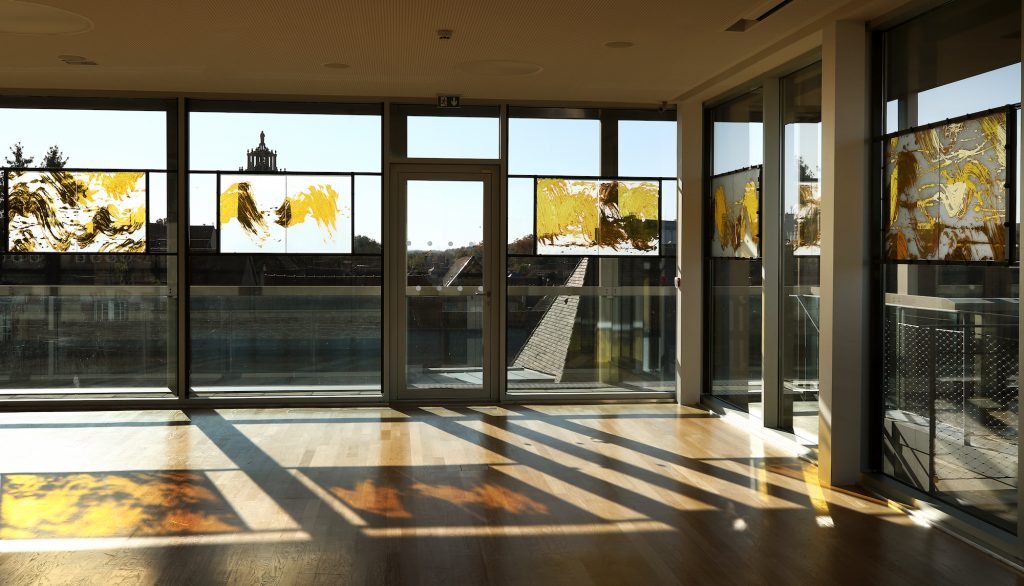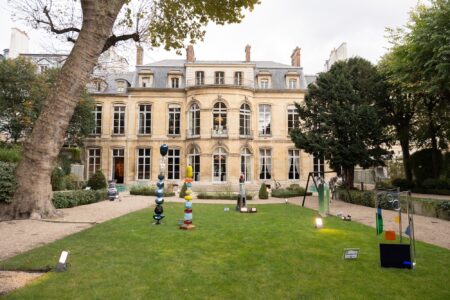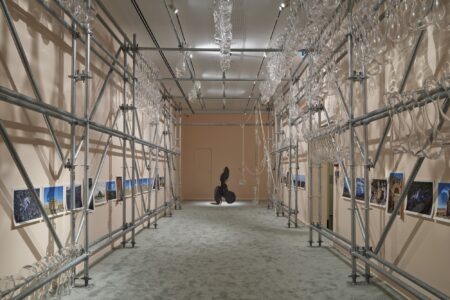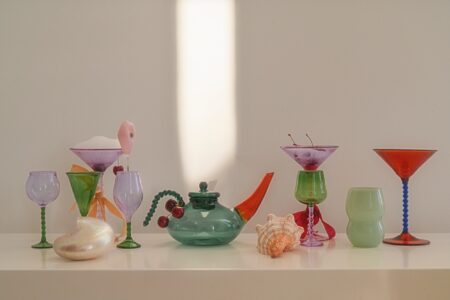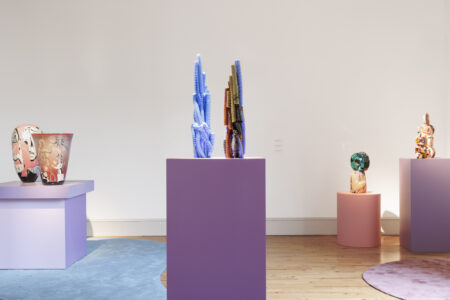Fabienne Verdier: Chercheuse d’Or
Fabienne Verdier recently opened an exhibition titled, “The Song of Stars”, at the Musée Unterlinden in Colmar. Curated by Frédérique Goerig-Hergott, the show presents 92 works that respond to the museum’s collection and architecture, including the iconic Isenheim Altarpiece by Grünewald. This exhibition, along with several others she had last spring, are discussed in an article that originally appeared in our S/S 2022 issue.
Nogent-sur-Seine was an essential stage along Fabienne Verdier’s pilgrimage, after China, the Groeningen Museum in Bruges, the Juilliard School in New York and the Musée Granet in Aix-en-Provence, with the next stop being the Unterlinden Museum in Colmar where she confronts Grünenwald’s Resurrection of Christ. By paraphrasing the title of Le Clézio’s novel, “Chercheur d’Or” (The Prospector), the artist-painter has become an alchemist of stained glass, by giving the reading keys for a recipe whose origins are to be found in the legend of a young glassworker, who drops his silver trouser button into the oven. With neither paint nor dye, silver stain was thus born. Fabienne Verdier explores it on a monumental scale, calligraphing the laminated glass in a vertical plane, to push it even higher towards the light, the divine.
While exploring the small churches of France’s Aube and Champagne regions, Fabienne Verdier discovered the treasures of 16th-century Champenoise stained glass windows, and was fascinated by the use of silver, or ‘yellow’, stain. She accepted an invitation to learn – and to find a contemporary script for this age-old glass art, thanks to the participation of stained-glass artist Flavie Serrière Vincent-Petit. All the meaning and beauty of their adventure are brought together in the exhibition “Alchemy of a Stained-Glass Window”, held jointly at both the Musée Camille Claudel and Nogent-sur-Seine’s Saint-Laurent church, which dates from the end of the Middle Ages, through the end of September; several installations will remain permanently.
“Capturing the mutation of light in all its variations of light, script and dance in the space”, is how artist Fabienne Verdier defines her gestures, taking shape in her movements and her artistic practice, which is oriented towards the Chinese culture of calligraphy and the painting of both East and West. Imbued with the aesthetics and philosophy of the Chinese masters amongst whom she apprenticed for 10 years, she maintains within herself the humility of these great artists, a testament that she disseminates in her book “The Dragon’s Brush: A Journey to China in Search of a True Master”.
She continues: “I have been fascinated by research on light refraction since working on the Flemish primitive painters with the Groeninge Museum in Bruges, from 2009 to 2013, as well as by the sound and musical waves that were the subject of my residency at the Juilliard School in New York. To express in the spectrum of white light through is an absolute of art, which I find in the art of stained glass. Using my large brushes in the stained-glass workshop, how can I interpret a dynamic of spiritual light, a breath of energy, the very essence of life? Without falling into biblical figuration.”
With her painting materials installed in the stained-glass workshop, Fabienne Verdier familiarised herself with silver stain and grisaille. Through repeated attempts, and fascinated by the passing through the fire of the silver particles, which fuse with the glass and become steeped in the mass, she finally succeeded in reaching her goal of abstracting the stained-glass windows and their iconography, of entering into the museum and in the church in an almost existential way. As she says, “We are children of light. The alchemy worked and the silver stain could be freed from the technical constraints of lead, to settle on the grey background. Many attempts have made it possible to keep the background and the paint on it. Through experimentation, the silver stain held alone in the space, supported and drawn by the greyness that emerged naturally.”
The stained-glass windows by Fabienne Verdier were installed in both the Musée Camille Claudel and in the choir bays of the church in Nogent-sur-Seine. An oculus will soon be inaugurated in the 18th-century chapel of the Cité du Vitrail in Troyes. “In the path of the sun, the immaterial form of light dances in the space, and the painted form detaches from the glass and becomes gold. It is very moving to be in the chapel and to see the Vortex, this passage between terrestrial and celestial existence, moving, while experiencing its form and its energy.”
The research at the heart of this famous silver stain material is accompanied by undulations, by gestures and a musical score, by flows and fluctuations. “I had to work the silver stain blindly on the stained glass before firing… No acrylic or ink reserve… I was in the clay and when I pulled the brush as I have done for 40 years, it was dragging and encumbered. The fluidity, depending on the brush load and the earthy mixture of the silver stain, forced me to face my fear of grinding the clay, which bakes like enamel. Stained glass is an art of fire – with its mysteries and its fragility. The glass used is laminated. In this relationship between fullness and emptiness, I had to invent a new form of expression. Painting vertically with my large brush is a first in the creation of stained glass with a reserve of material and an upward gesture.”
Out of this extraordinary adventure, permanent stained-glass windows have been installed in tribute to Camille Claudel’s “Waltzes”, in the eponymous museum in Nogent-sur-Seine. “I greatly admire Camille Claudel’s vital forces and the way she translates movement, body, and waltz into sculpture. We share this energy of the wave, which in Camille’s work translates the immense tension between herself and Rodin, which she directs towards the sky. I have translated in these “vortex forces” which are close to my own “Vortices,” the intoxication of song and dance, dizziness, air, and metamorphosis in large ascending spirals, carried by the creative breath.”
Also in the museum are the “Imaginary Topographies”, which play on the changing lighting conditions in the stained-glass windows. “It creates a panorama of the city, within a relationship between urban and natural landscape. The images are fleeting, bathed in an unreal light. Ochre that turns to gold becomes light.” For her two future exhibitions, Fabienne Verdier will explore the spatial dimension of the Unterlinden Museum, with a set of “Rainbows” paintings and a monumental “Vortex” work, linked to the Resurrection panel of the Isenheim altarpiece. In it, she will approach, in a chromatic field of its own, the topic of the representation of death as the trace of a cosmic energy which is transmitted to the living.
« Le chant des étoiles », Unterlinden Museum, Colmar, arch. Herzog & de Meuron, 01.10.2022 to 28.3.2023
« Im Auge des Kosmos », exhibition of drawings, Saarland Museum – Moderne Galerie, Saarebruck, 3.9.2022 to 5.2.2023
www.kulturbesitz.de/de/museen/moderne-galerie
@galerielelongparis
@galerielelong (New York)
galerie-lelong.com
This article originally appeared in TLmag37: State of Gold
